Long before the advent of television and the everyday inclusion of a sofa in every living room, these large and richly designed chairs were exclusively owned by a privileged few. As centuries went by, the obtainability of furniture to recline upon (and the luxury to do so) became evermore accessible and by the 1950s, no home was complete without a three-piece suite.
 Above: The Purple Dress by William Glackens (1908-10) and Woman Seated on a Sofa by Walter Crane (1865–1915)
Above: The Purple Dress by William Glackens (1908-10) and Woman Seated on a Sofa by Walter Crane (1865–1915)
This article will look into the history of sofas, from bold baroque chairs with gilt decoration to the stylish simplicity of mid-century designs. We will also give tips on how to care for your antique sofas at home, as well as their restoration and reupholstery.
 Above: a selection of sofas from different eras
Above: a selection of sofas from different eras
Sofa history
It is important to note that not all of us refer to our largest living room chair as a sofa, you may also call it a settee or couch depending on the style and your own linguistics. These words all derive from different sources, sofa from Arabic, settee from Old English and couch from Old French. All have been used interchangeably over many centuries.
 Above: sofa (1750s) and a painting of The Comtesse d’Egmont Pignatelli by Alexander Roslin (1760s)
Above: sofa (1750s) and a painting of The Comtesse d’Egmont Pignatelli by Alexander Roslin (1760s)
The long and fascinating story of our living spaces is combined with our social history. Whilst you may find sofas dating as far back as classical antiquity, the majority of recognisable examples we see today are from the late 18th century onwards. In this era, interior designers and skilled craftsmen began creating full collections of furniture to suit every room, living spaces were designed especially for entertaining and reclining – making large armchairs, chaise longues and sofas a central element.
In the regency period, a fashion for all things classical inspired many recreations of Roman and Grecian designs, as well as pieces that were heavily inspired by them. A neoclassical sofa or chaise longue was perfect for this style, as their reclining features easily evoked the interiors of a Roman emperor.
 Above: a view of the drawing room at Mar Lodge, Aberdeenshire, 1860
Above: a view of the drawing room at Mar Lodge, Aberdeenshire, 1860
By the mid 19th century, well-made household furniture became fully obtainable to those outside of the aristocracy due to the industrial revolution and the increasingly affluent middle class. Although many pieces were machine made, they retain stability and quality unlike the shop-bought pieces we know today. At the end of the century, some sofas were still crafted by hand due to a specific push against this industrialisation – Arts and Crafts furniture has an emphasis on creating a naturalistic living environment through the creation of handmade and individually designed pieces.
 Above: a sofa that belonged to the King of Sardinia (1835) and a settee designed by artist Sir Lawrence Alma-Tadema (1885)
Above: a sofa that belonged to the King of Sardinia (1835) and a settee designed by artist Sir Lawrence Alma-Tadema (1885)
In the early 20th century several important design waves came to dictate the fashion for all interior features. Art Deco is one of the most recognisable and today these pieces may still fetch high prices at auction. Following the Second World War, mid century modern couches and full living room sets were developed commercially to provide all homes with affordable and simple styles that were built to be long-lasting.
 Above: a sofa designed by Herman Miller for an airline company, 1965
Above: a sofa designed by Herman Miller for an airline company, 1965
Modern sofas come in a range of shapes and styles that often recall the fashions of the past. Due to this, our antique furniture experts are still able to revive and restore them using traditional techniques. In some cases we find that a sofa is from a multitude of different eras, with a Georgian frame, Victorian upholstery and early 20th century casters. Understanding the history of each material helps our team to provide the highest levels of care for each individual piece they come across in our studio.
 Above: a wide variety of sofa styles have been available since the commercial boom in the mid 20th century
Above: a wide variety of sofa styles have been available since the commercial boom in the mid 20th century
Antique Sofa Restoration and Upholstery
When an antique sofa has deteriorated, as is often the case with well-loved items in the home, it may become an eyesore that no longer seems to fit in with modern surroundings. Our expert restorers work to revive the internal structure, wooden frame and upholstery to suit our clients home, allowing historic designs to continue as functional furniture.
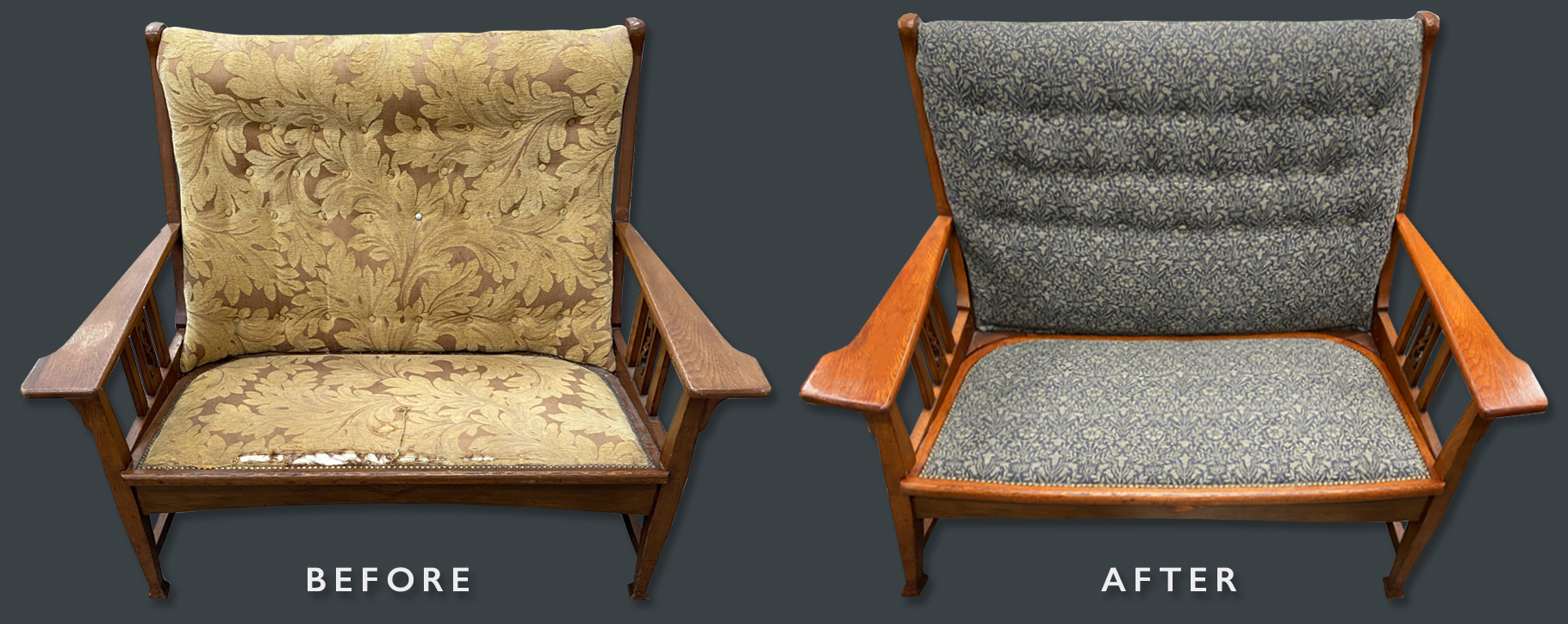
In some cases, the upholstery can be restored to suit the historic style – this is important for homes that want to remain true to their past and for those that have a love of original textiles. Others may prefer a modern fabric, allowing the sofa to fit in with their contemporary living space.
As seen below, missing cushions and severely damaged areas can be expertly re-created by our antique furniture experts. This can be completed in a textile that is as close of a match as possible to the original, allowing the overall style to remain unaltered.
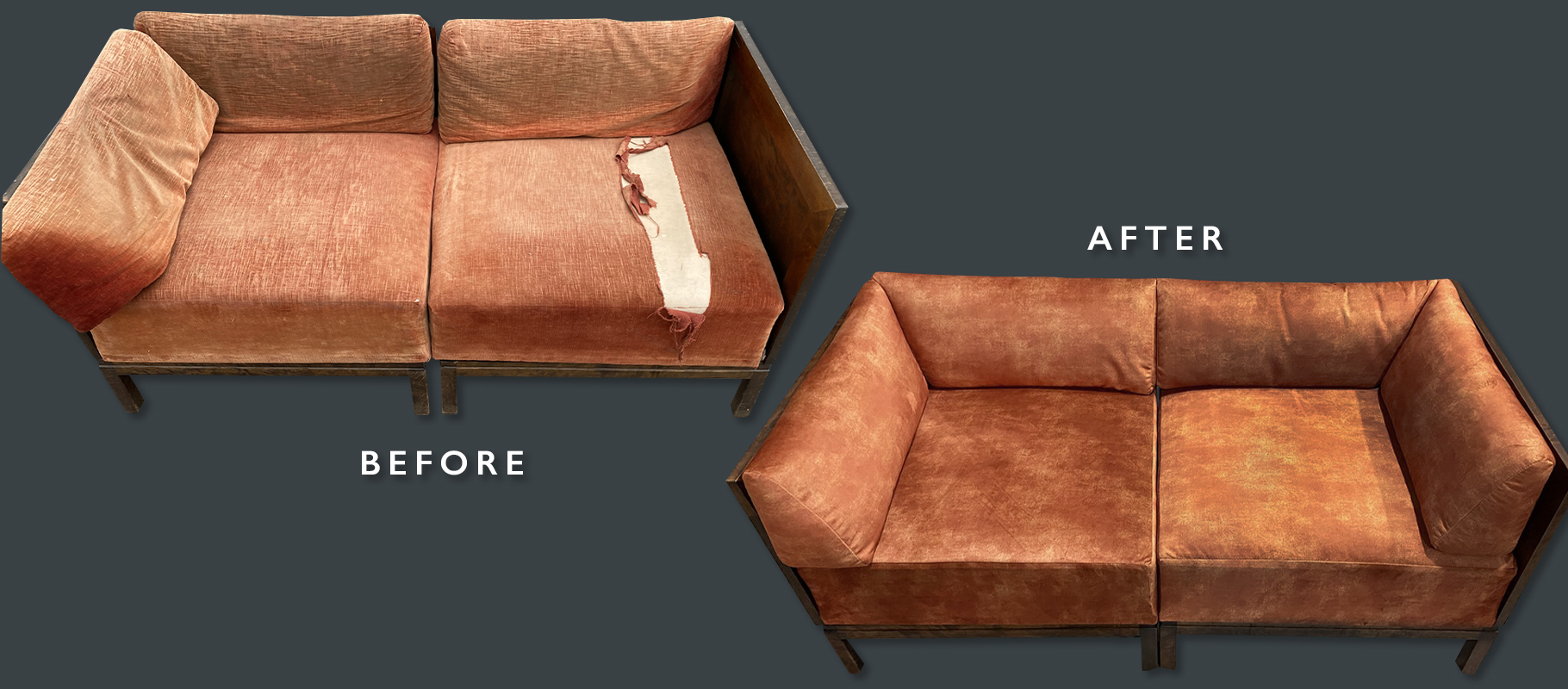
Wooden areas can be sensitively cleaned and stabilised, ensuring that your sofa can return to your home without fear of severe deterioration when it is used by family and friends. Wooden legs often require a new finish to restore abrasions and wear from decades or centuries of use. Veneers may also be lifting, these can be re-adhered or re-created using traditional techniques.
How can we help?
For more information on our antique sofa restoration and reupholstery services, email us via [email protected] or call 0207 112 7576

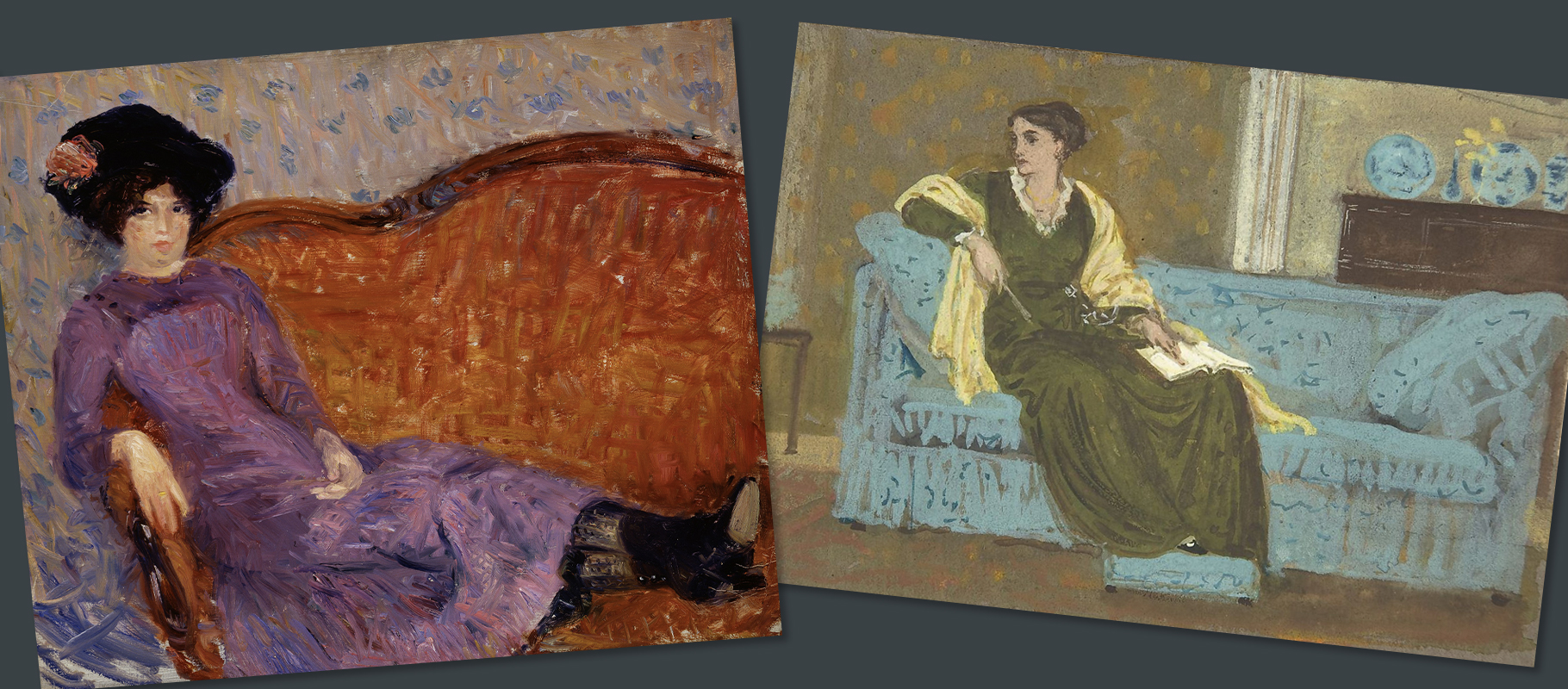 Above: The Purple Dress by William Glackens (1908-10) and Woman Seated on a Sofa by Walter Crane (1865–1915)
Above: The Purple Dress by William Glackens (1908-10) and Woman Seated on a Sofa by Walter Crane (1865–1915) Above: a selection of sofas from different eras
Above: a selection of sofas from different eras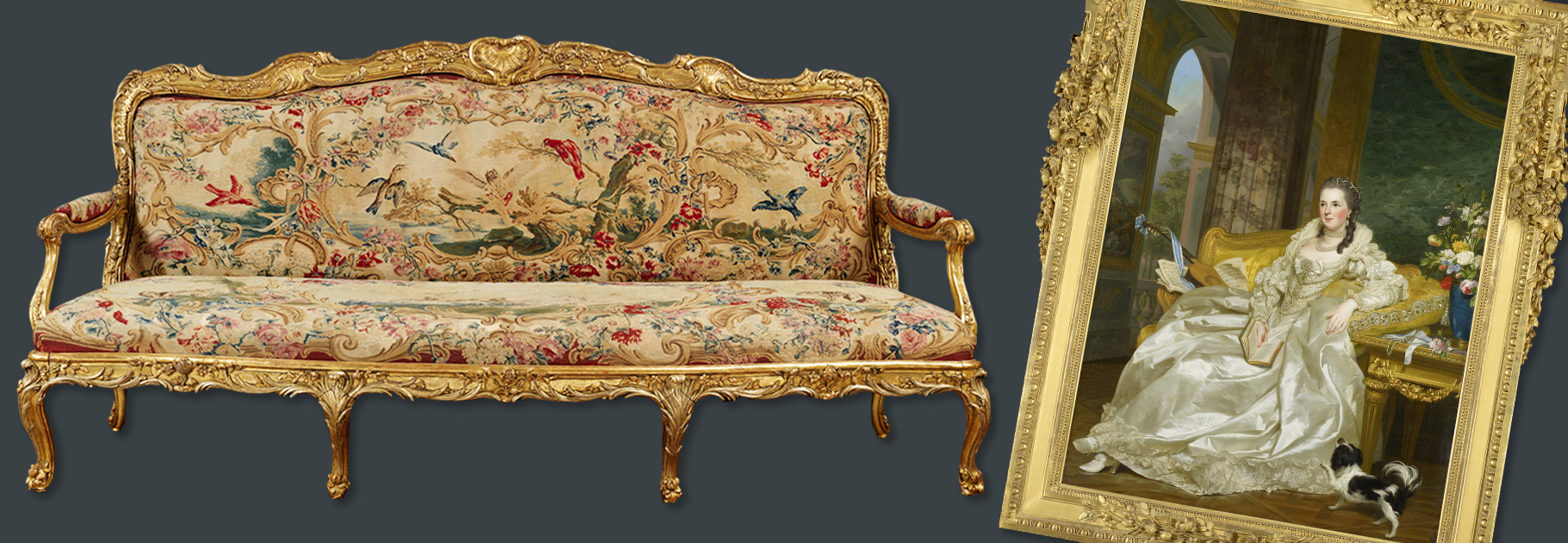 Above: sofa (1750s) and a painting of The Comtesse d’Egmont Pignatelli by Alexander Roslin (1760s)
Above: sofa (1750s) and a painting of The Comtesse d’Egmont Pignatelli by Alexander Roslin (1760s)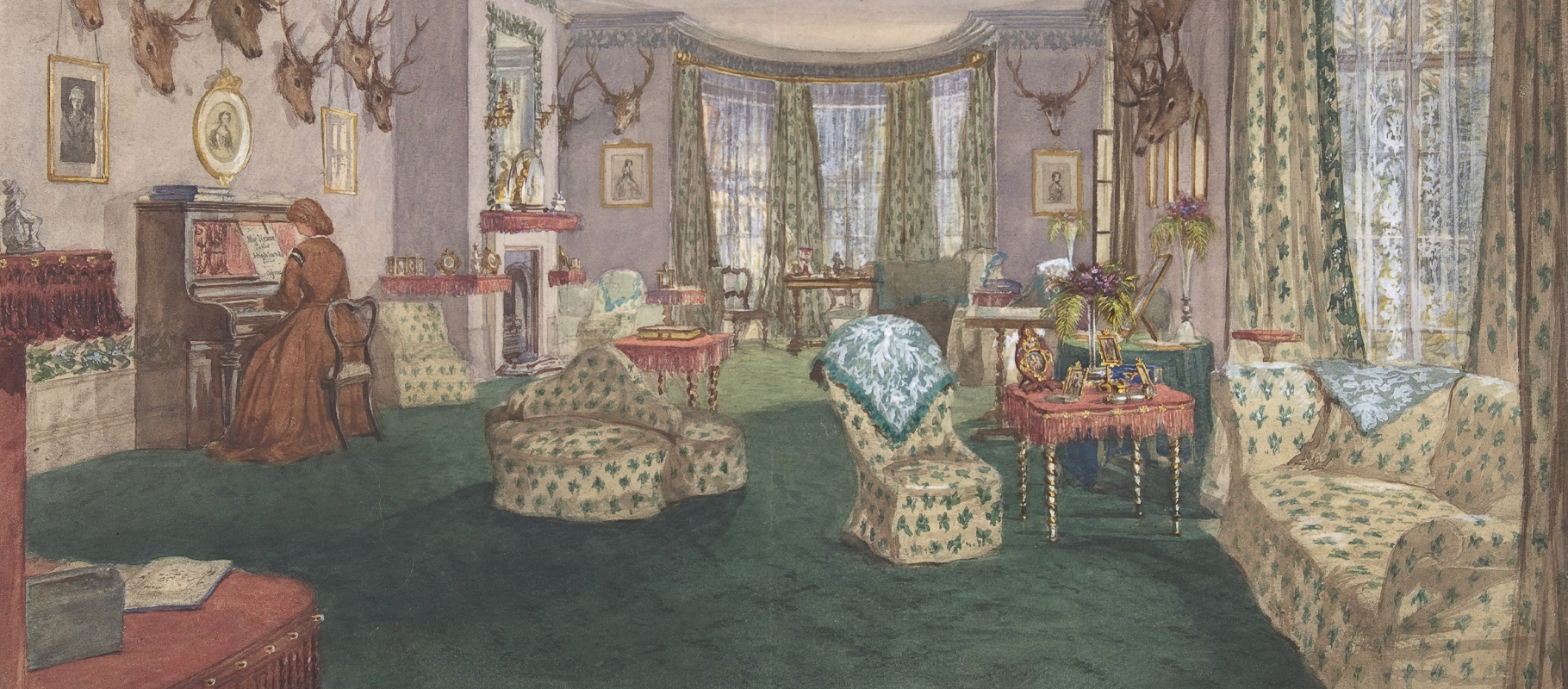 Above: a view of the drawing room at Mar Lodge, Aberdeenshire, 1860
Above: a view of the drawing room at Mar Lodge, Aberdeenshire, 1860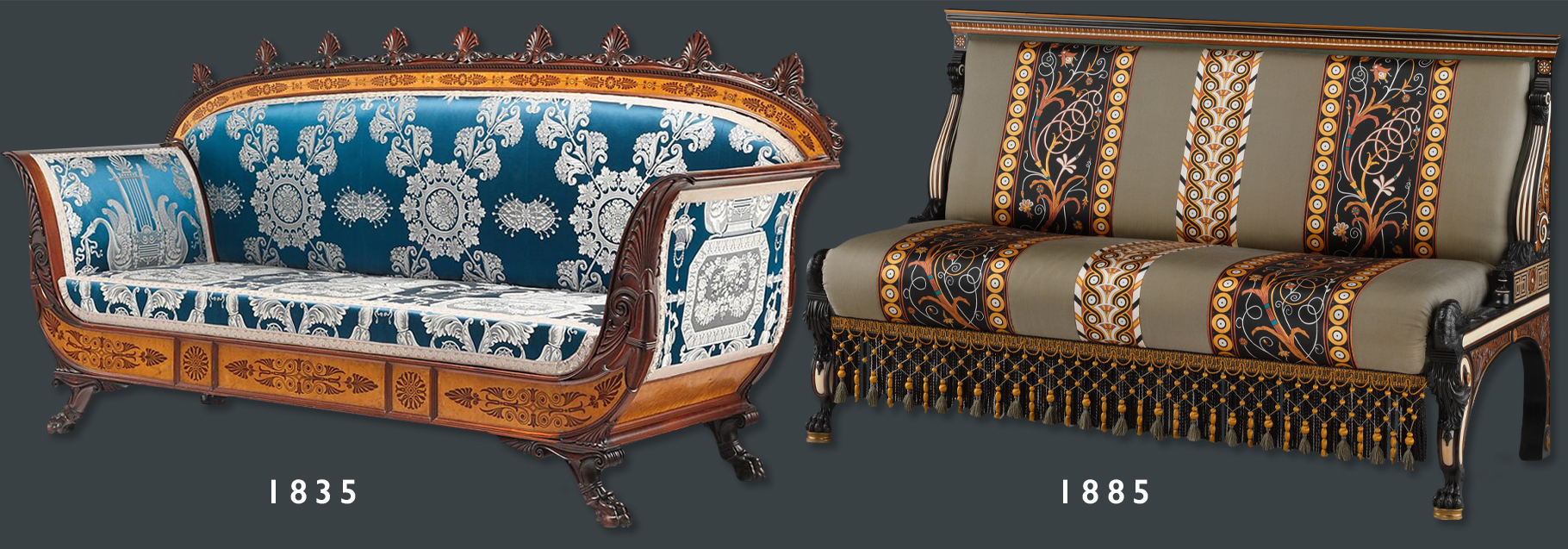 Above: a sofa that belonged to the King of Sardinia (1835) and a settee designed by artist Sir Lawrence Alma-Tadema (1885)
Above: a sofa that belonged to the King of Sardinia (1835) and a settee designed by artist Sir Lawrence Alma-Tadema (1885)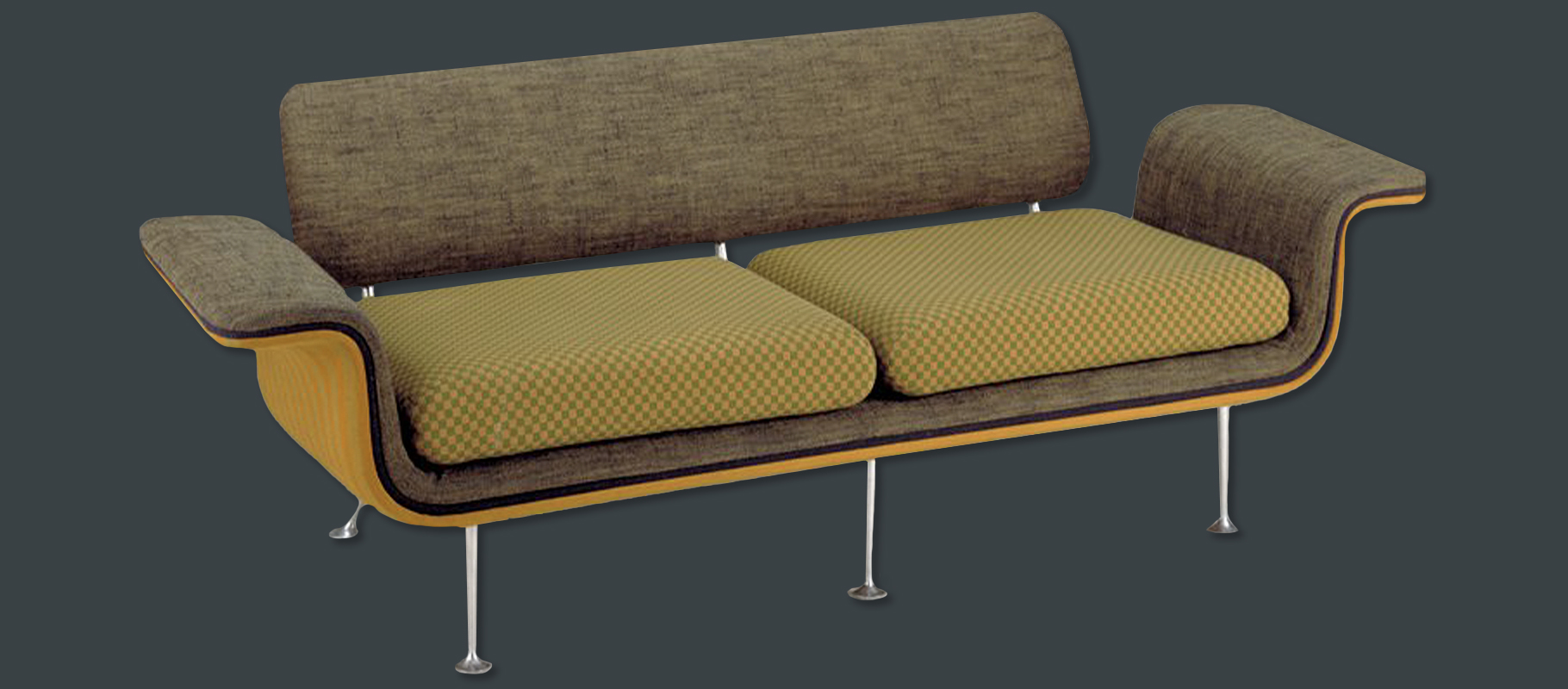 Above: a sofa designed by Herman Miller for an airline company, 1965
Above: a sofa designed by Herman Miller for an airline company, 1965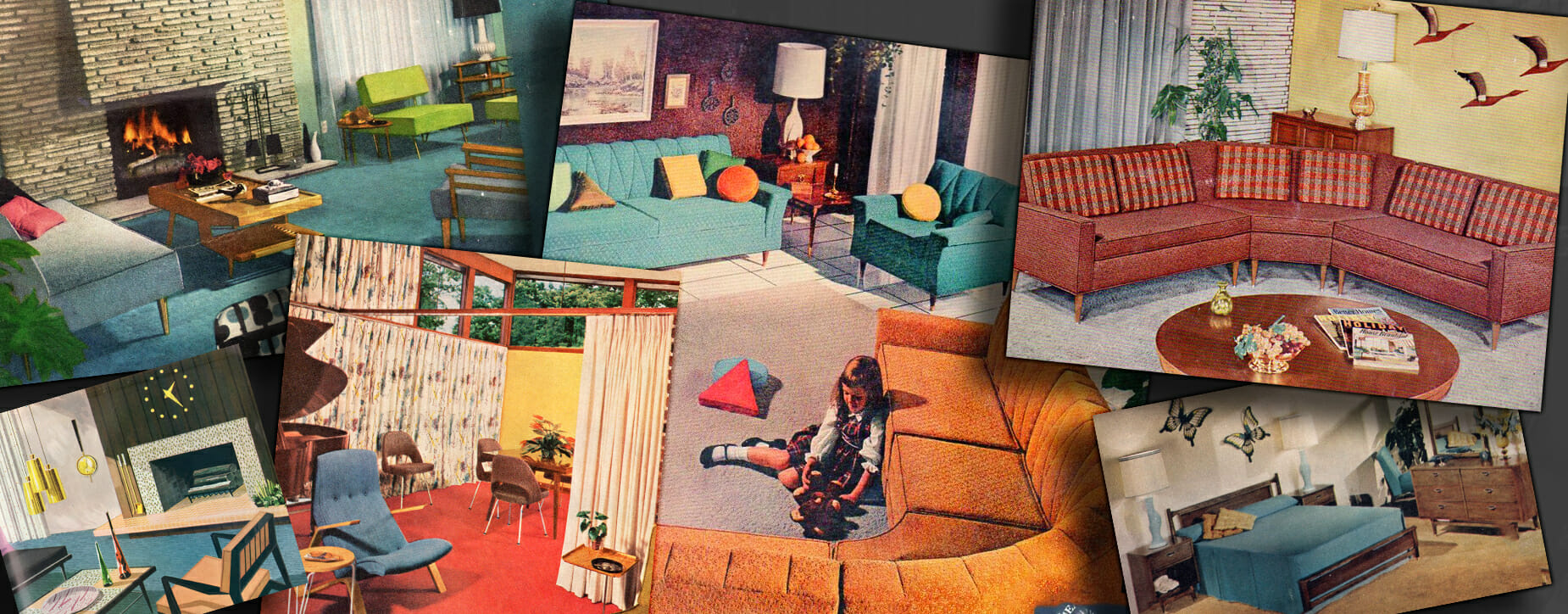 Above: a wide variety of sofa styles have been available since the commercial boom in the mid 20th century
Above: a wide variety of sofa styles have been available since the commercial boom in the mid 20th century




